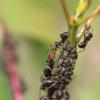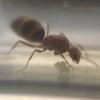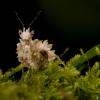Hello,
The more time I spend anting and documenting species native to my geographic location, the more I have taken an interest in small, cryptic ants. The term "cryptic" is used in the same context as it would with any other entity: hard to find and tucked away. Consequently, with regard to ants, the term almost always implies minute size, ambiguous coloration, and nondescript nesting. Strumigenys and Stenamma are wonderful examples of such genera; colonies tend to have low worker counts and are hidden in leaf litter, soil, and rotting organic material.
There seems to be a good deal of information regarding some of these ants, especially Strumigenys, whose taxonomy has recently experienced major revisions, which means some myrmecologist, somewhere, somehow, managed to find him/herself a colony or two.
Given their size and apparent rarity, how would one relatively proficient in the art of "anting" go about trying to locate a colony of cryptic ants? Of course, this would be mainly for photography purposes or perhaps the sheer pleasure associated with finding one; I'm not typically one to harvest wild colonies.
Any information would be greatly appreciated.
Thank you!






















